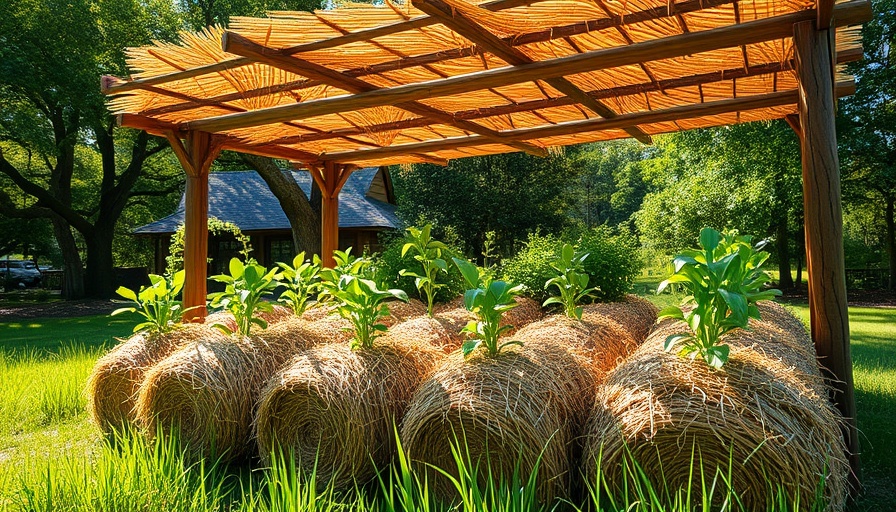
Discovering the Benefits of Hay-Bale Gardening
In the realm of sustainable gardening, the hay-bale garden stands out as a remarkably innovative option. Unlike traditional methods that require extensive soil preparation and considerable labor, this approach utilizes the natural decomposition process of hay bales to create a fertile growing environment. Ideal for those who may have physical challenges or limited space, hay-bale gardening offers a way to cultivate vegetables and decorative plants without the need for bending over. This accessibility makes it particularly appealing to older gardeners or individuals with back issues.
Why Hay-Bales Are Ideal for Urban Farming
One of the most significant advantages of hay-bale gardening is its adaptability to various environments. Whether you live in a densely populated urban area with limited gardening space, such as a balcony or small patio, or a rural setting, hay bales can be placed almost anywhere that receives sufficient sunlight. This method is the epitome of urban farming; it allows for efficient space usage while maintaining a beautiful and productive garden. Even better, hay-bale gardening fits the urban agriculture trend, promoting local food production and sustainable practices.
Minimizing Weeds and Pests with Hay-Bale Gardening
Traditional gardening often comes with the burden of weeds and soil-borne pests. However, hay-bale gardens minimize these issues significantly. The initial conditioning phase of the bales helps reduce weed seeds, making routine maintenance a breeze. In fact, these bales create an environment that is less conducive to common pests, so gardeners can spend less time tackling these challenges and more time enjoying the fruits of their labor.
Composting Made Easy: Recycling Old Hay Bales
After a growing season, the benefits of hay-bale gardening don’t just stop at the output of fresh produce. The bales can be repurposed into rich compost for future plantings. As the bales decompose, they provide essential nutrients to the soil, enhancing its fertility over time. This cyclical approach aligns perfectly with sustainable agriculture principles, allowing gardeners to make the most out of their resources while minimizing waste.
Practical Tips for Starting Your Hay-Bale Garden
If you’re excited to dive into the world of hay-bale gardening, here are some practical tips to help you get started:
- Choose Your Location Wisely: Ensure your selected area receives at least six hours of sunlight daily.
- Conditioning the Bales: Remember to properly condition your hay bales by watering and adding organic material like compost. This process is critical for creating a rich growing environment.
- Monitor Water Levels: Hay bales can dry out quickly, particularly in hot or windy conditions. Make sure to keep your bales adequately moist for optimal plant growth.
- Select Compatible Plants: Start with easy-to-grow crops like herbs, tomatoes, and zucchini, which thrive well in hay-bale gardens.
- Rotation and Care: Rotate your crops as you would in traditional gardening to maintain soil health and prevent pests.
By considering these steps, not only can you tap into the potential of your hay-bale garden, but you'll also be contributing to growing sustainability in your community.
Final Thoughts: Embracing a Sustainable Lifestyle
Embracing a hay-bale garden is not just about growing your food; it's a step towards a sustainable lifestyle. As more people seek to bridge the gap between urban living and nature, hay-bale gardening provides a flexible and joyful solution. Whether you're a novice gardener or someone looking to add a touch of greenery to your living space, this technique promises both a fulfilling activity and a bounty of fresh produce right at your doorstep. So grab a hay bale and start your journey into urban farming today!
 Add Row
Add Row  Add
Add 




 Add Row
Add Row  Add
Add 

Write A Comment